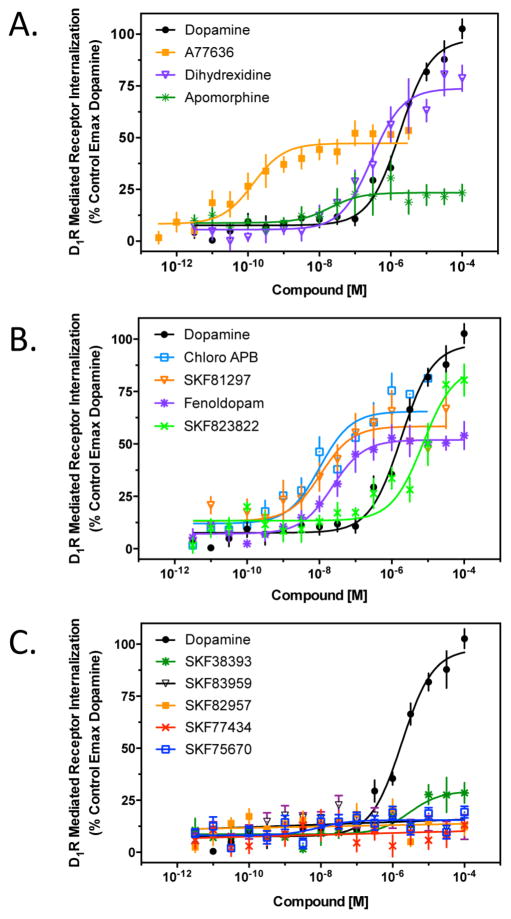Figure 4.
Agonist-induced internalization of the D1R. Receptor internalization assays were conducted using the D1R PathHunter internalization assay system as described in Methods. Percent internalization is expressed as the maximum produced by dopamine. (A) Cells were stimulated with the reference D1R-selective agonists, A77636, dihydrexidine, and apomorphine. (B) Cells were incubated with the substituted benzazepines that showed low or no bias in the cAMP and β-arrestin recruitment assays. (C) Cells were incubated with the substituted benzazepines that were G protein-biased and showed insignificant β-arrestin recruitment. All data are means of at least three independent experiments conducted on different days in triplicate and expressed as a percentage of the maximal signal given by dopamine (N = 3–4). EC50 and Emax values were obtained for each individual experiment through nonlinear regression, and average data are reported in Table 3.

